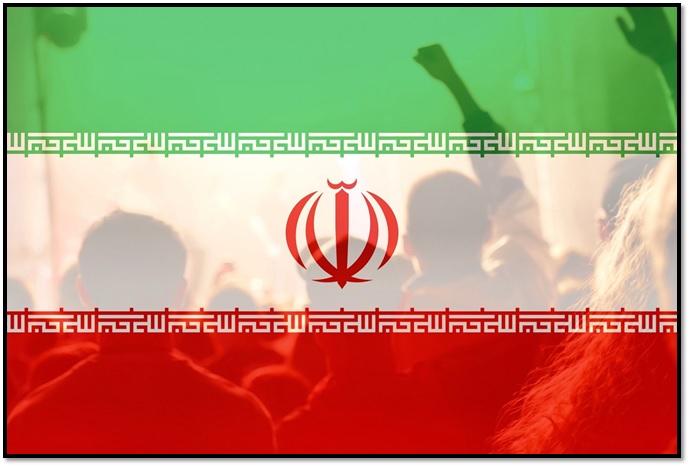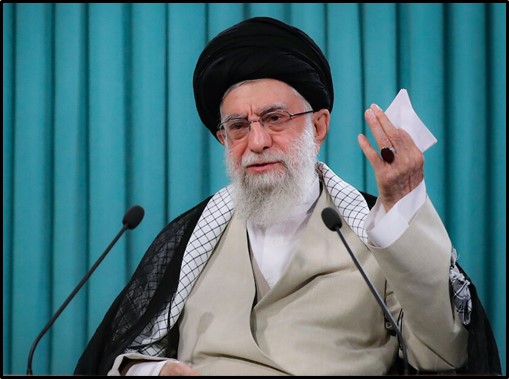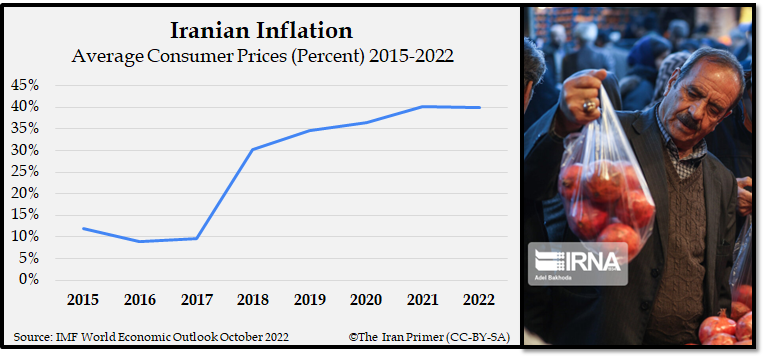Nasser Hadian is a U.S.-educated professor of political science at the University of Tehran and a former visiting professor at Columbia University.
As Iran marks the end of its year, what is the status of the protests that first erupted in September 2022?
As of early 2023, major protests had subsided. But other unexpected events could trigger new demonstrations because the core grievances have not been addressed. Mahsa Amini’s death reflected mounting discontent with the government over a range of issues from personal freedoms to corruption and economic mismanagement. The demonstrations were an opportunity to vent frustrations.
 Some 55 percent of Iran's nearly 88 million people supported the protests, and another 10 percent endorsed the more violent “riots,” the supreme leader’s office said in October 2022. Yet only 250,000 to 300,000 people – less than one percent of the population – participated in the demonstrations. Most people supported the call for reforms but were afraid of getting arrested, injured or killed in clashes with security forces. The cost for participation was too high.
Some 55 percent of Iran's nearly 88 million people supported the protests, and another 10 percent endorsed the more violent “riots,” the supreme leader’s office said in October 2022. Yet only 250,000 to 300,000 people – less than one percent of the population – participated in the demonstrations. Most people supported the call for reforms but were afraid of getting arrested, injured or killed in clashes with security forces. The cost for participation was too high.
During the protests, the slogans demanding “death to the dictator” worried voters who favored reform over regime change. Revolutions are risky shortcuts to change. Iran had two revolutions in the 20th century – the Constitutional Revolution from 1905 to 1911 and the Islamic Revolution of 1979. Both were incredibly costly. The 2022 demonstrations, which were mostly peaceful, sometimes turned violent. Many people hesitated to join for fear that a civil war would erupt and that the country would disintegrate. Iranians have witnessed civil wars in Afghanistan, Iraq, Libya, and Syria over the years. For many, any other outcome – including a continuation of the status quo – is preferable to chaos and bloodshed.
What are the prospects in the new year for government reforms that could address the public’s grievances? What actions is the government promising? What is it able to do? What are the hardest things to do?
As of March 2023, the government had not expressed a willingness to make substantive changes to policy. It had three potential paths forward.

The first path is government retribution. After the protests dissipated, authorities had more bandwidth to retaliate against anyone who explicitly or tacitly supported the protests. For example, the judiciary could sentence more people to prison. Or the intelligence services could track down, interrogate and intimidate more people.
The second path is to implement major reforms. The government could regain legitimacy if it were to:
- Repeal the law on mandatory hijab
- Formally disband the morality police
- Free all political prisoners
- Hold a relatively free and fair parliamentary election in 2024
- Curb the Guardian Council’s authority – either by law or by decree of the supreme leader – to vet candidates running for president, parliament, the Assembly of Experts, city councils, etc.
- Form a more inclusive government by bringing back experienced diplomats and technocrats from previous administrations
Prospects are slim for any of these reforms. In December 2022, Parliament and the judiciary reviewed the hijab law for potential changes. But in January 2023, the judiciary instead announced new penalties for violators.
The third and most likely option is a continuation of the status quo, perhaps with cosmetic changes. President Ebrahim Raisi could reshuffle his foreign policy and economic teams. The Guardian Council could qualify a slightly more diverse pool of candidates for the 2024 parliamentary elections. These would not be difficult changes to implement. The government could also be laxer in enforcing the dress code. In early 2023, up to 20 percent of women in some parts of Tehran were walking around streets, malls and metro stations without hijab. And they were not harassed by the morality police or other authorities.
What economic challenges does Iran face? The government admitted that the currency has lost nearly half of its value against the dollar since September 2022. How does the public feel?
The most pressing challenges are curbing inflation and stabilizing foreign exchange rates against the dollar and euro. The fluctuation in the exchange rate has contributed to a general sense of uncertainty. People have delayed making financial decisions because they do not know if they should sell their assets or wait.

Rising prices have impacted all Iranians, albeit to varying degrees. In February 2023, prices for consumer goods were up 53 percent compared to February 2022. The prices of food and beverages were up more than 70 percent.
Wage earners and people on fixed incomes, including pensioners and the elderly, have suffered the most from skyrocketing prices. They, along with working class families, have had to significantly cut their expenses. But some members of the traditional middle class, including small business owners and shopkeepers, have benefitted from the crisis. They have raised consumer prices at a faster rate than wages for workers.
Medium- and long-term challenges include high unemployment and meager GDP growth. As of December 2022, general unemployment was 8.2 percent, and youth unemployment was 14.8 percent. From March 2022 to December 2022, the GDP grew by 3.3 percent. Economic growth in 2023, as in previous years, will be vulnerable to fluctuations in the price of oil. China’s economic slowdown could negatively impact its ability to invest in Iran. Beijing’s target for 2023 GDP growth was about five percent, the lowest in more than three decades. China has been Iran’s largest trade partner since 2012.
Given the international pressure on Iran over its nuclear program, what is the government thinking in Tehran about next steps?
The government is divided on whether to revive the 2015 nuclear deal, known as the Joint Comprehensive Plan of Action (JCPOA). Most officials involved in the debate seem to favor restoring the agreement. But powerful voices argue that the draft agreement presented by the European Union in 2022 heavily favored the United States. It required many concessions from Iran without guaranteeing commensurate economic benefits. By the summer of 2023, Iran and the world’s six major powers – Britain, China, France, Germany, Russia and the United States – may need to look for alternatives to the JCPOA to avoid a crisis. Western powers along with Israel have been increasingly concerned about Iran’s nuclear advances, especially Tehran’s enrichment of uranium to 60 percent. Uranium enriched to 90 percent or higher is considered weapons-grade. In January 2023, the United States and Israel carried out their largest joint military exercise to date. The risk for miscalculation or misperception by either side has increased.
 One option would be a temporary agreement to stop Iran from further nuclear advances. One model could be the 2013 Joint Plan of Action (JPOA), an interim agreement between Iran and the world’s six major powers. It rolled back parts of Iran’s nuclear program and included more frequent U.N. inspections of facilities in exchange for limited and reversible sanctions relief.
One option would be a temporary agreement to stop Iran from further nuclear advances. One model could be the 2013 Joint Plan of Action (JPOA), an interim agreement between Iran and the world’s six major powers. It rolled back parts of Iran’s nuclear program and included more frequent U.N. inspections of facilities in exchange for limited and reversible sanctions relief.
Another option would be a "freeze for freeze" deal. This path could require confidence-building measures on the part of Iran and the United States before negotiating a deal. For example, Iran could increase transparency by installing more cameras or other U.N. monitoring equipment at nuclear facilities. In return, the United States could provide limited sanctions relief. Those gestures could pave the way for a "freeze for freeze" agreement in which the United States could maintain its sanctions regime but not impose any new nuclear-related sanctions. And Iran could continue to enrich uranium to 60 percent purity but not install new centrifuges, the cylindrical machines that enrich uranium.
The "freeze for freeze" option could also lead to a longer and stronger nuclear deal to replace the JCPOA. Iran has four major concerns that it would want to address in a new agreement.

The first priority is ensuring the sustainability of a nuclear deal. Iran wants to deter any future U.S. president from withdrawing from an agreement, like President Donald Trump did in 2018. One mechanism would be for Iran to uninstall advanced centrifuges and store its stockpile of enriched uranium; Tehran considers both to be strategic assets. The equipment and material could be sealed and monitored by the International Atomic Energy Agency. If the United States were to abandon the agreement, Iran could break the seals and quickly ramp up its nuclear program. Tehran is concerned that another U.S. president could withdraw at will due to domestic politics, so this arrangement could provide insurance.
The second concern is to modify the so-called “snapback” mechanism through which U.N. sanctions can be reimposed on Iran. U.N. Security Council Resolution 2231, which endorsed the JCPOA, included a clause that would allow any state participating in the deal to call for the reimposition of U.N. sanctions for Iran’s “significant non-performance of commitments.” Iran wants to require either a consensus or a majority among the six major powers to initiate the mechanism rather than just one country.
The third concern is ensuring that the Western powers honor their commitments. Tehran would prefer that a neutral committee of a dozen or more distinguished experts and diplomats verify that the United States and European countries comply with a deal. Even when the JCPOA was fully implemented, Iran was not receiving the full economic benefits promised under the deal. The agreement had only included a mechanism for verifying that Iran was in full compliance.
The fourth concern is compensation for the damage caused by the reimposition of U.S. sanctions. The government has estimated that the sanctions cost Iran more than $240 billion between 2018 and 2022. Iranian negotiators know that the Biden administration, due to U.S. domestic politics, cannot directly pay Iran. But compensation could come in other forms, such as credit lines or other tangible economic benefits. Tehran would want to address more issues in a longer and stronger deal, but those would be the top four priorities.
Photo Credits: Flag via Shutterstock; Centrifuges via Mashregh News
